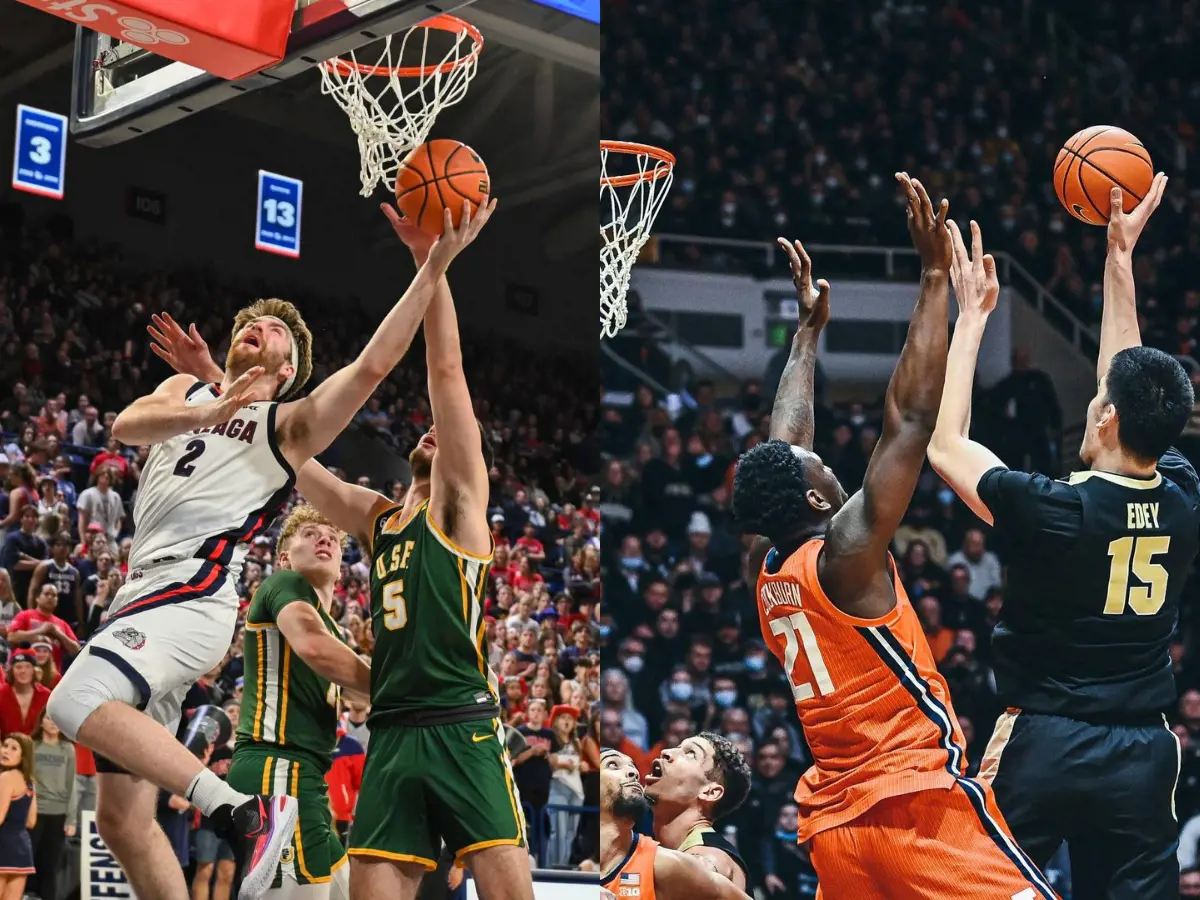Fg attempts NBA meaning is to shoot the ball into the opponents basket. Field goal can be 2 or 3 points depending on the position.
In certain basketball leagues, a field goal can have a distinct point value than the usual two points. For specimen, in FIBA 3x3 basketball competitions, a field goal can be worth one point, while in the BIG3 basketball league, it can be worth four points.
Three statistics are used to gauge a player's field goal efficiency, including field goals attempted (FGA), field goals made (FGM), and field goal percentage (FG%). These metrics help analyze a player's accuracy and effectiveness in the shooting.
NBA player Kareem Abdul-Jabbar grips the record for the most field goals made in a career. Abdul-Jabbar played for 20 seasons in the NBA, from 1969 to 1989, and made 15,837 field goals.
What Does FG Mean In Basketball?
FG meaning in basketball is 'Field Goal' a shot made from anywhere on the court during live play except during a free throw attempt.
The term FG is often used in statistics to track a player's shooting performance during a game, season, or career. The number of field goals made and attempted and the percentage of thriving attempts are frequently used to evaluate a player's scoring efficiency and effectiveness.
A field goal shot can be taken from anywhere on the court except during a free throw attempt. It can be a two-point or a three-point effort, depending on where the player takes the shot.

If the ball goes through the hoop without being blocked by a defender or hitting the rim, it is considered a successful field goal. If the shot misses, it is considered a field goal attempt, and the ball is live and in play for rebounding and other actions.
Several active and past NBA players have specialized in two-point field goals, including LeBron James, Kevin Durant, and Jimmy Butler. They have demonstrated an ability to score efficiently and effectively from close to the basket.
Other notable past field goal specialists include Michael Jordan, Kevin Garnett, Wilt Chamberlain, Kareem Abdul-Jabbar, and Larry Bird, who were all highly skilled at converting field goal attempts from various positions and situations on the court.
What Is Field Goal Percentage?
A field goal percentage (FG%) in basketball is a statistic that measures a player's or team's shooting efficiency.
It is estimated by dividing the total number of field goals made by the player or team by the total number of field goal attempts, then multiplying the result by 100.
The formula for calculating field goal percentage in basketball is: FG% = (Total number of field goals made ÷ Total number of field goal attempts) x 100
For instance, if a player made eight field goals out of 16 field goal attempts, their field goal percentage would be 50%: FG% = (8 ÷ 16) x 100 = 50%

A field goal percentage (FG%) equal to or greater than .500 (50%) is generally regarded as good, but this standard isn't equally applicable to all positions. Typically, guards have lower FG% than forwards and centers.
The NBA career record for FG% is held by DeAndre Jordan at 0.673. Currently, the record for the highest FG% in a single season is 0.742, which New York Knicks center Mitchell Robinson achieved during the shortened 2019-20 season.
How Many Points Is A Field Goal Worth In Basketball?
A field goal in basketball is a shot made by a player while the ball is in play. The number of points a field goal is worth depends on where the shot is taken on the court.
If an fg is made from inside the three-point line, it is worth two points. The three-point line is 22 feet (6.7 meters) from the basket in the NBA and 23 feet, 9 inches (7.24 meters) away in FIBA and NCAA basketball. If a player makes a field goal outside the three-point line, it is worth three points.
As a matter of fact, a field goal differs from a free throw. A free throw is a shot a player takes from the free-throw line after an opposing player fouls them, and that is worth one point.
Additionally, two points in FG means a shot from anywhere inside the three-point line is worth two points. It includes jump shots, layups, hook shots, and bank shots.
Whereas, a three point field goal is a shot from beyond the three-point line is worth three points. It include shots taken from the court's perimeter, known as a "three-pointer" or a "long-range shot."
Types Of Field Goals In Basketball
There are several types of field goals that players can attempt during live play. Here are the most common types of field goals in basketball:
- Jump Shots
A jump shot is a shot where a player jumps into the air and releases the ball at the highest point of their jump.
This strategy is used to shoot over defenders who are trying to block the shot or contest the player's shooting space.
First, the player commences by dribbling the ball while moving toward the basket. As they hover over their shooting range, the player sets their feet and begins to gather their momentum for the jump.
The player then jumps vertically, extending their arm and releasing the ball with a flick of their wrist at the apex of their jump.
For specimen, a skilled shooter like Steph Curry of the Golden State Warriors utilizes a quick release and a high-arcing shot to shoot over taller defenders. He can also shoot off the dribble, catch and shoot, and move without the ball to create scoring opportunities.
- Slam Dunk
A slam dunk in basketball refers to a fierce and acrobatic shot where a player jumps and forcefully throws the ball down through the rim with one or both hands.
It is an optically impressive and exciting play that often results in a loud reaction from the crowd and can intimidate rivals.

The mechanics of a slam dunk entail several complex movements, including running toward the basket, gathering momentum, jumping as high as possible, extending the arms, and forcefully throwing the ball down through the rim.
The most notable instance of a slam dunk in basketball history is Michael Jordan's "free-throw line dunk" during the 1988 NBA Slam Dunk Competition.
In this iconic moment, Jordan ran from beyond the free-throw line, took off in mid-air, and extended his arm to throw the ball down through the rim with authority.
- Tip-Ins
A tip-in is a type of shot where a player redirects a missed shot into the basket by tipping the ball with their fingers. It is often used when a player is close to the basket and the ball is already in the air.
The player positions themselves close to the basket and jumps as the ball is in the air. They then use their fingertips to redirect the ball into the basket, often using a quick and precise motion.
Additionally, Dennis Rodman of the Chicago Bulls was known for his ability to grab rebounds and quickly redirect missed shots back into the basket for easy points.
- Layups
In basketball, a "layup" refers to a one-handed shot taken by an offensive player near the basket worth two points.
Due to their proximity to the basket, the player has a higher chance of successfully making a layup than a shot from a farther distance.
As a result, an open layup is considered a higher percentage field goal attempt than a three-point shot or a jump shot.
Aside from a free throw or a slam dunk, a layup is an efficient way for an offensive player to score. However, scoring chances decrease when multiple or taller defenders oppose the offensive player in the key.

Moreover, players can use various layups, including the dunk, euro step layup, floater, left-handed or right-handed layup, overhand or underhand layup, power layup, and reverse layup.
Wilt Chamberlain, a renowned basketball player, was one of the early adopters of a flashy finger-roll layup. Other notable NBA players who relied heavily on the underarm finger roll include Mike Bibby and Allen Iverson.
Why Is It Called A Field Goal In Basketball?
It is called a field goal in basketball as the term field is commonly used to refer to the playing surface that is the court.
Whereas, the term "goal" refers to the basket or hoop, which is the target for the ball to be scored in. So, a field goal in basketball is essentially a successful shot made from the field of play into the basket or the goal.
Basketball was invented by James Naismith, a gym teacher at a YMCA in Springfield, Massachusetts in 1891, and his 13 rules of basketball are a treasured document in sports history.
Interestingly, the term "field goal" does not appear in the original rules, but Naismith does use the word "field" to describe the area of play and "goals" to refer to made baskets.

It's not a big leap to connect the term "field goal" to a subset of the goals, mainly because Naismith did carve out goals that would be awarded differently, such as a team receiving one goal after three straight fouls from the opposing team.
The term "field goal" is also used in football. Walter Camp was a crucial figure in the development of American football, and his work helped standardize the game's rules.
In 1883, he introduced a scoring system that assigned different values to different types of plays, including the field goal. The system he settled on awarded four points for a touchdown, two points for kicks after touchdowns, two points for safeties, and five points for field goals.










